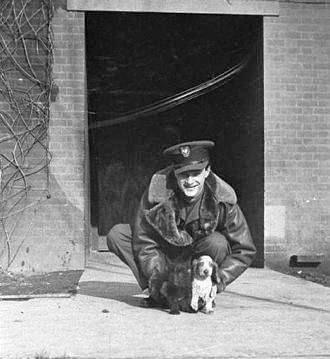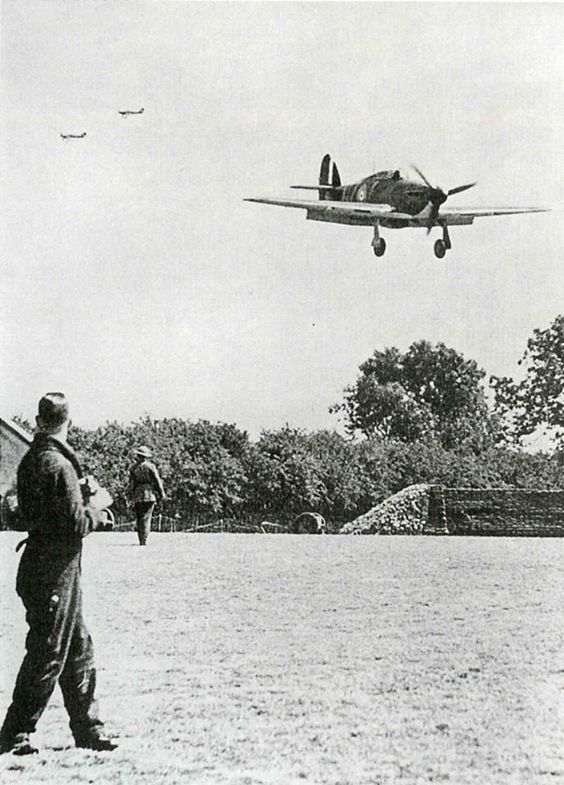Sunday 15 December 1940
 |
| "Flying Officer Mirosław "Ox" Ferić of No. 303 Polish Fighter Squadron being decorated with the Distinguished Flying Cross by Air Marshall Sholto Douglas, 15 December 1940. The first four Polish recipients of the DFC received their awards for their participation in the Battle of Britain during a presentation ceremony at RAF Leconfield. Mirosław Ferić was one of them." © IWM (CH 1838). |
The Italians, meanwhile, bet all their chips on their stronghold of Bardia, commanded by General Annibale Bergonzoli (known as "Electric Whiskers" due to his once-flaming red beard). The Tenth Army retreat there and reinforce Tobruk, which, aside from being a well-defended fortress, also constitutes a key port which would be much handier for the British than the much smaller one at Sollum. The Italians also bring up three divisions from the interior of Libya and station them on a line between El Mekili and Derna. Since the Italians now have ample warning of an attack and the British are outrunning their supplies, this line has a reasonable chance of holding - but it well inside Libya and 168 km northwest of Tobruk along the most direct route. The British already have Bardia surrounded, trapping the 40,000 Italians inside.
Royal Navy monitor HMS Terror continues giving the Italians headaches. While the British surround the port on land, it stands brazenly off Bardia and bombards the Italians there for the entire afternoon.
Not all goes well for the Royal Navy, however. Free French submarine Narval hits a mine off Sfax/Kerkenah, Tunisia and is lost. As is usually the case with such incidents involving submarines, the exact date of this loss is an educated guess because nobody lives to tell the tale in such incidents (54 lost). The loss is only realized when the submarine fails to return to its port of Malta on the 16th.
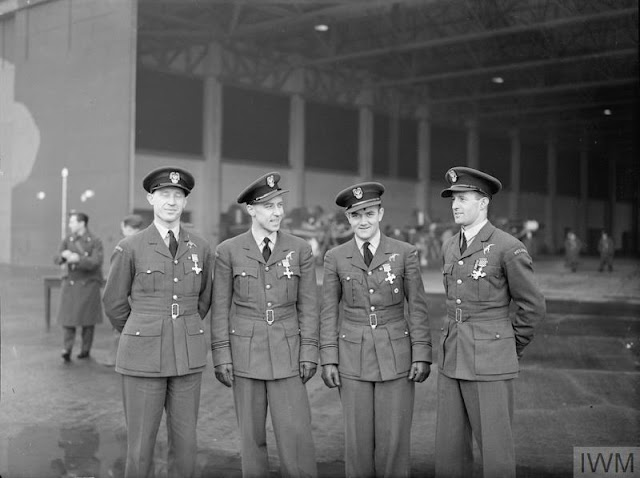 |
| "The first four Polish recipients of the Distinguished Flying Cross of No. 303 Polish Fighter Squadron wearing their awards after a presentation ceremony by Air Marshal Sholto Douglas at RAF Leconfield, 15 December 1940. Left to right: Squadron Leader Witold Urbanowicz, Flying Officer Zdzisław Henneberg, Pilot Officer Jan "Donald Duck" Zumbach and Pilot Officer Mirosław "Ox" Ferić." © IWM (CH 1839). |
The Luftwaffe, after a quiet day, revisits Sheffield, which it originally bombed on 12 December. This raid continues its recent practice of repeatedly bombing medium-sized British towns with full-scale attacks. While only a small group of 16 German Heinkel He 111 bombers arrives soon after darkness, they drop thousands of incendiaries that start massive fires. This creates a target visible to the main force, which arrives overhead a couple of hours later. The Luftwaffe pounds the eastern half of the city for three hours, but most of the bombs miss the city's important factories. The two aerial attacks together kill 750 people and destroy 3000 homes and small businesses. During the night, the Luftwaffe loses five aircraft.
Battle of the Atlantic: The Luftwaffe attacks Portsmouth, "sinking" destroyer HMS Cameron. The Cameron, in dry dock, is blasted onto its side and utterly destroyed in a rare case of a ship being lost for reasons other than actually sinking or grounding. One of the destroyers acquired from the US in the destroyers-for-bases deal, the destruction of the Cameron continues a pattern of hard luck for the newly acquired destroyers.
German E-boats are active along the Great Yarmouth coast, and the come across Convoy FS 360. Two of them, S 25 and S 58, sink 2301 ton British freighter NC Monberg. There are nine deaths.
Royal Navy minesweeper HMS Britomart collides with fellow minesweeper Seagull, sending the former to the repair yard at Aberdeen for almost a month.
Deep in the Atlantic, German heavy cruiser Admiral Scheer transfers its prisoner to supply vessel Nordmark. The British continue fruitlessly to search for heavy cruiser Admiral Scheer around the Canary Islands.
Convoy EN 41 departs from Methil, Convoy SC 16 departs from Halifax, Convoy MW 58 departs from Port Said (Operation Hide), Convoy SL 59 departs from Freetown.
Destroyer HMS Ithuriel and submarine HMS P-32 are launched.
 |
| "The first four Polish recipients of the Distinguished Flying Cross of No. 303 Polish Fighter Squadron wearing their awards after a presentation ceremony by Air Marshal Sholto Douglas at RAF Leconfield, 15 December 1940. Left to right - Squadron Leader Witold Urbanowicz, Pilot Officer Jan "Donald Duck" Zumbach, Pilot Officer Mirosław "Ox" Ferić and Flying Officer Zdzisław Henneberg." © IWM (CH 1840). |
Italian/Greek Campaign: The Greek 3rd Infantry Division, which took Porto Palermo on the 13th, resumes its advance north toward the key port of Himara. The Italians have regrouped, though, and now are fighting hard. The weather now is the Italians' ally. The Regia Aeronautica also is active against the advancing Greek troops.
German/Vichy French Relations: Hitler, with his deep fascination regarding obscure European social history, realizes that very few things stir the French soul like repatriating Napoleon to France. The transfer of the dead Emperor's exhumed body from his place of exile on remote St. Helena back to Paris on 15 December 1840 was one of the great celebrations in 19th Century French history. So, realizing that bringing up memories of Bonaparte's royal line might also remind the French who sent him to St. Helena in the first place, and realizing that it is 100 years to the day later, Hitler craftily arranges to bring back another dead Napoleon: Napoleon II, also known as the Duke of Reichstadt and "The Eaglet." While never holding real power and still an infant upon his father's capture, Napoleon II did technically hold the title Emperor of France for a week before his own abdication. Napoleon II has been interred in deep obscurity in Vienna, Austria since even before the return of his father's remains.
However, things don't quite go as Hitler intends. For one thing, the whole affair elicits barely a yawn from the French public, for whom Napoleon II is just a name drawn from aged history books. Napoleon II never ruled France and was barely a blip along the Napoleonic line - which itself is rapidly fading from importance, particularly since Napoleon III proved such a monumental disaster - given his defeat by the Germans at Sedan, the memory of which is a lot fresher than that of Napoleon II. In fact, one thing that Hitler probably didn't consider is that bringing up the Napoleonic dynasty at this sensitive moment in French history might remind the French that, just as the Germans in 1870 broke through a vastly overrated French Army at Sedan, so too did such an army succumb in an eerily similar way at the same place in 1940. However, Hitler is never known for being particularly empathetic about what other nations might think about his obviously manipulative decisions.
More importantly from the perspective of present relations, however, French Premier Marshal Petain doesn't even bother attending the ceremony in Paris, which is under German occupation. While Petain has his own issues to deal with at the moment, including the situation with the recently dismissed Pierre Laval, his blasé attitude merely reflects the complete indifference within France by just about everyone. This puts the final verdict to this obvious attempt at emotional manipulation. Hitler, informed that Petain won't attend, does not attend the ceremony either, and professes outrage that his grand gesture would be dismissed when he "meant so well." Hitler probably did mean this as a kind gesture, but it does nothing at all to soften relations between the countries. This leaves Hitler's brief June visit to Paris as the only time that he ever visited Paris, his most significant conquest.
Parisians make light of the whole affair - while the Germans aren't looking - and the joke is that they would have preferred coal to ashes during a hard winter. The French government as a whole also takes a dim view of the entire affair for decades, and it is not until 1969 that it sets aside a small chamber opposite the entrance of the Dome des Invalides for the remains of Napoleon Bonaparte's only legitimate child. The whole affair also rankles Mussolini, who remains extremely jealous of Hitler's overtures to the French.
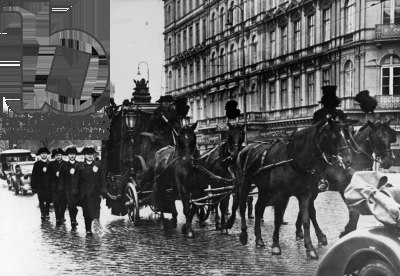 |
| The remains of Napoleon II brought back to Paris, Note the absence of crowds along the streets. 15 December 1940. |
British Military: General Harold Alexander is appointed to General Officer Commanding-in-Chief (GOC-in-C) of Southern Command (southwest England, a sensitive area of defense). His temporary rank of lieutenant-general, achieved as a result of his successful withdrawal of I Corps at Dunkirk, becomes permanent. Alexander achieved renown among the troops by being on the last destroyer leaving Dunkirk on 3 June 1940 - they appreciate little touches like that.
US Military: Headquarter, Eighth Naval District transfers from Charleston, South Carolina to New Orleans, Louisiana. It is under Acting Commandant Captain Thaddeus A. Thomson, Jr.
French Government: Relations between Germany and Vichy France, currently under great strain, are not helped when the German ambassador, Abetz, formally requests that Laval be released and reinstated. Petain indeed releases Pierre Laval from house confinement but does not restore him to his former positions. However, Laval accrues additional prestige due to being seen as the Germans' "man in France." Even though he now is out of office, he is by no means forgotten.
American Homefront: "Pride of the Bowery," starring "The East Side Kids," is released.
Future History: Ursula Ledersteger is born in Vienna, Austria. She becomes the "German Jayne Mansfield" and appears in several films by Rainer Werner Fassbinder under the stage name Barbara Valentin. Among other things, Valentin is married to US actor John Ashton ("Beverly Hills Cop") during the peak years of that franchise's popularity, and also was close with Freddie Mercury. She perishes in 2002 and is buried at the Ostfriedhof in Munich.
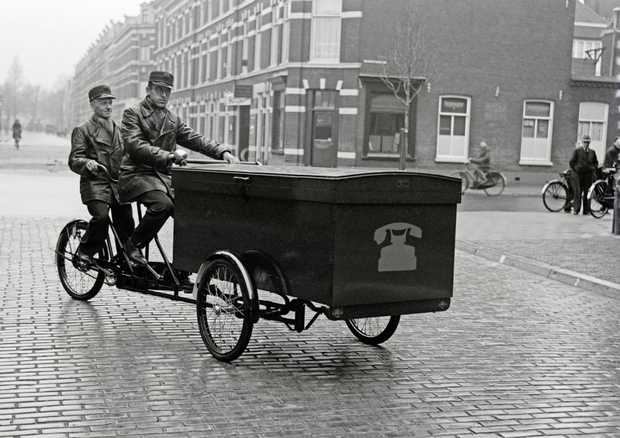 |
| PTT Telephone engineers go about their business in Amsterdam, 15 December 1940 (ANPFOTO/Anp). |
December 1940
December 1, 1940: Wiking Division Forms
December 2, 1940: Convoy HX 90 Destruction
December 3, 1940: Greeks Advancing
December 4, 1940: Italian Command Shakeup
December 5, 1940: Thor Strikes Hard
December 6, 1940: Hitler's Cousin Gassed
December 7, 1940: Storms At Sea
December 8, 1940: Freighter Idarwald Seized
December 9, 1940: Operation Compass Begins
December 10, 1940: Operation Attila Planned
December 11, 1940: Rhein Wrecked
December 12, 1940: Operation Fritz
December 13, 1940: Operation Marita Planned
December 14, 1940: Plutonium Discovered
December 15, 1940: Napoleon II Returns
December 16, 1940: Operation Abigail Rachel
December 17, 1940: Garden Hoses and War
December 18, 1940: Barbarossa Directive
December 19, 1940: Risto Ryti Takes Over
December 20, 1940: Liverpool Blitz, Captain America
December 21, 1940: Moral Aggression
December 22, 1940: Manchester Blitz
December 23, 1940: Hitler at Cap Gris Nez
December 24, 1940: Hitler at Abbeville
December 25, 1940: Hipper's Great Escape
December 26, 1940: Scheer's Happy Rendezvous
December 27, 1940: Komet Shells Nauru
December 28, 1940: Sorge Spills
December 29, 1940: Arsenal of Democracy
December 30, 1940: London Devastated
December 31 1940: Roosevelt's Decent Proposal
2020








